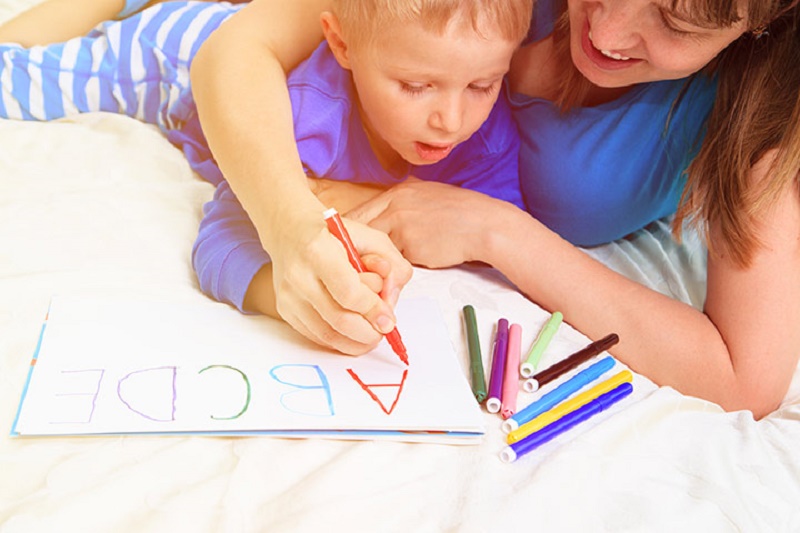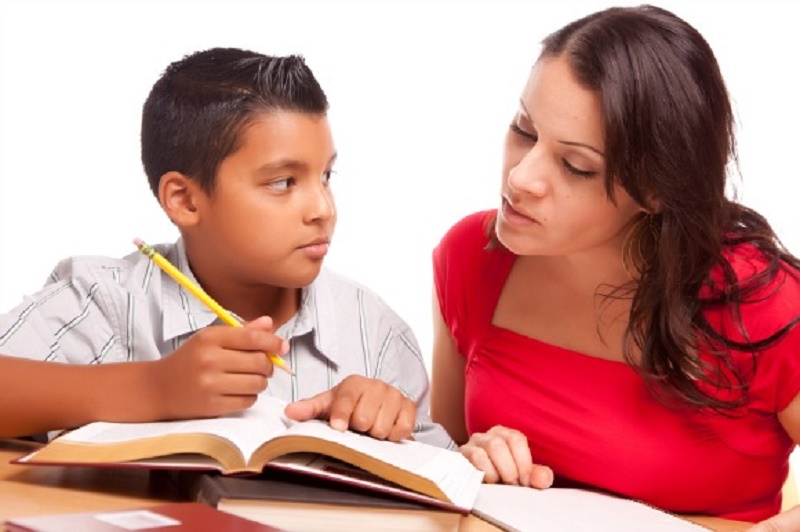Children learn to write gradually, beginning with a copy or reproduction phase. Then they can write what is dictated to them. And finally, they manage to write spontaneously. To advance through these stages, children must refine their calligraphic skills and develop attention and memory. In this article, we discuss how to teach kids to write.
How to teach kids to write?
Learning to write is not a simple task. Children learn to write gradually. In general, children begin an approach to written language in the last phase of early childhood education, around 5 years.
In this stage, children learn to distinguish their name and become familiar with the written language in a playful way. However, the approach to literacy does not start until the primary, when the child is 6 years old.
The learning of writing goes through different phases: the phase of copying, writing dictation and spontaneous writing. The first phase, as the name implies, consists of copying letters, numbers, etc. Later, learning becomes more complex, since it is essential to translate what is heard (sounds) into letters (writing). And finally, the emergence of this learning occurs when the child is able to write what he thinks or imagines.
It is essential that parents know each of these stages in order to detect possible learning difficulties. At home, we can work with them by reading a story together, asking questions about it, etc.
In this article on learning to write we see what each phase consists of:
- Model reproduction or copy
- Dictation writing
- Free or spontaneous writing
1st phase: model reproduction or copy
In the beginning, in early childhood education (around 5 years old), it is about acquiring manual motor skills through the reproduction of models, that is, copying.
You start with the most basic: vertical, horizontal, inclined, curved … To move towards more complex models, such as copies of letters, numbers, syllables or words.
In this phase, the development of writing runs parallel to the development of the expressive capacity of the drawing, although trying to differentiate one from the other.
2nd phase: dictation writing
Dictation writing is clearly a much more complex activity than copying models, in which many factors are involved, all of which are necessary for the result to be good.
In later stages, from the age of 6, the child is introduced to dictation writing. Here there is no longer a visual model present and the hearing-vision relationship becomes important.
The child relies exclusively on a sound model and must be able to discriminate what he hears (the isolated sounds), translate them into letters and reproduce them on paper, placing them in space in the same order as they have been listened to in time.
It becomes essential:
A good hearing ability to hear and discriminate sounds. An auditory memory to retain what has been heard and the order in which the sounds have been presented. A visual memory to be able to represent a model of the letter to write that arises by association with that sound.
A fine motor adequate and sufficient to reproduce the models that we represent mentally. At this moment, comprehensive reading is an important support that enhances writing. That is until now the child has been able to do well in school because it has not required him more than the manual copy or the association of sounds to letters to read.
However, mental representation now appears and usually coincides with the change to primary school, at 6 years old. At this age, it is when we begin to see which children have a fluent learning, both reading, and writing, and which children begin to be out of phase with their peers.
3rd phase: free or spontaneous writing
Finally, we work on the ability of spontaneous writing, understood as free writing, in which there is no sound model either, or at least not external to the subject.
Here the child writes what is internally represented at the mental level, what the child is imagining.
This capacity begins to develop at the beginning of primary school and year after year it becomes more complex, resulting in the possibility that children do essays, exams of open questions or jobs.
If a certain fluency is not developed to freely write what we think, all those activities we are talking about will be more costly. Then, the child will begin to be discouraged by the enormous effort involved in homework. Thus, this difficulty can lead to certain delays in learning.







